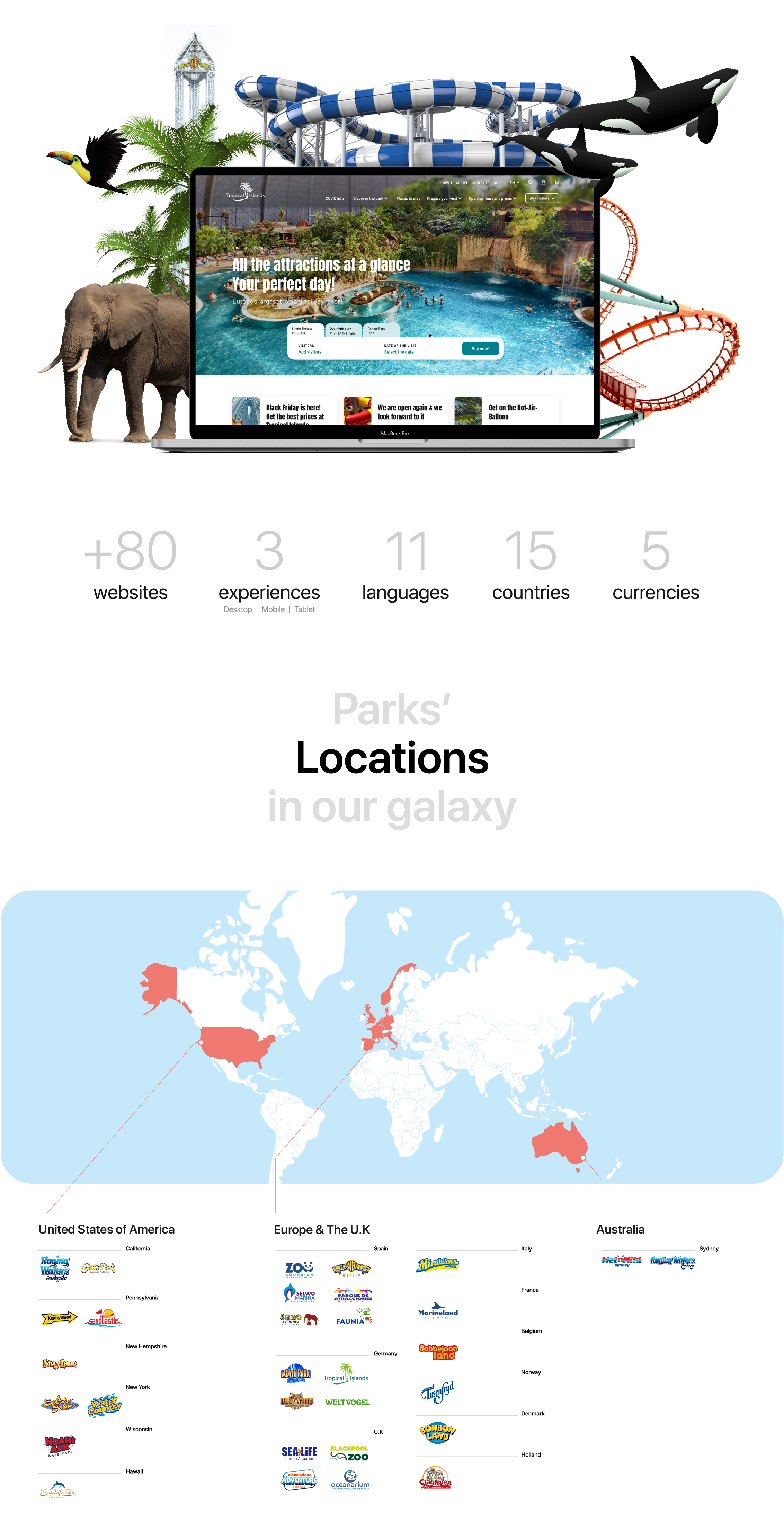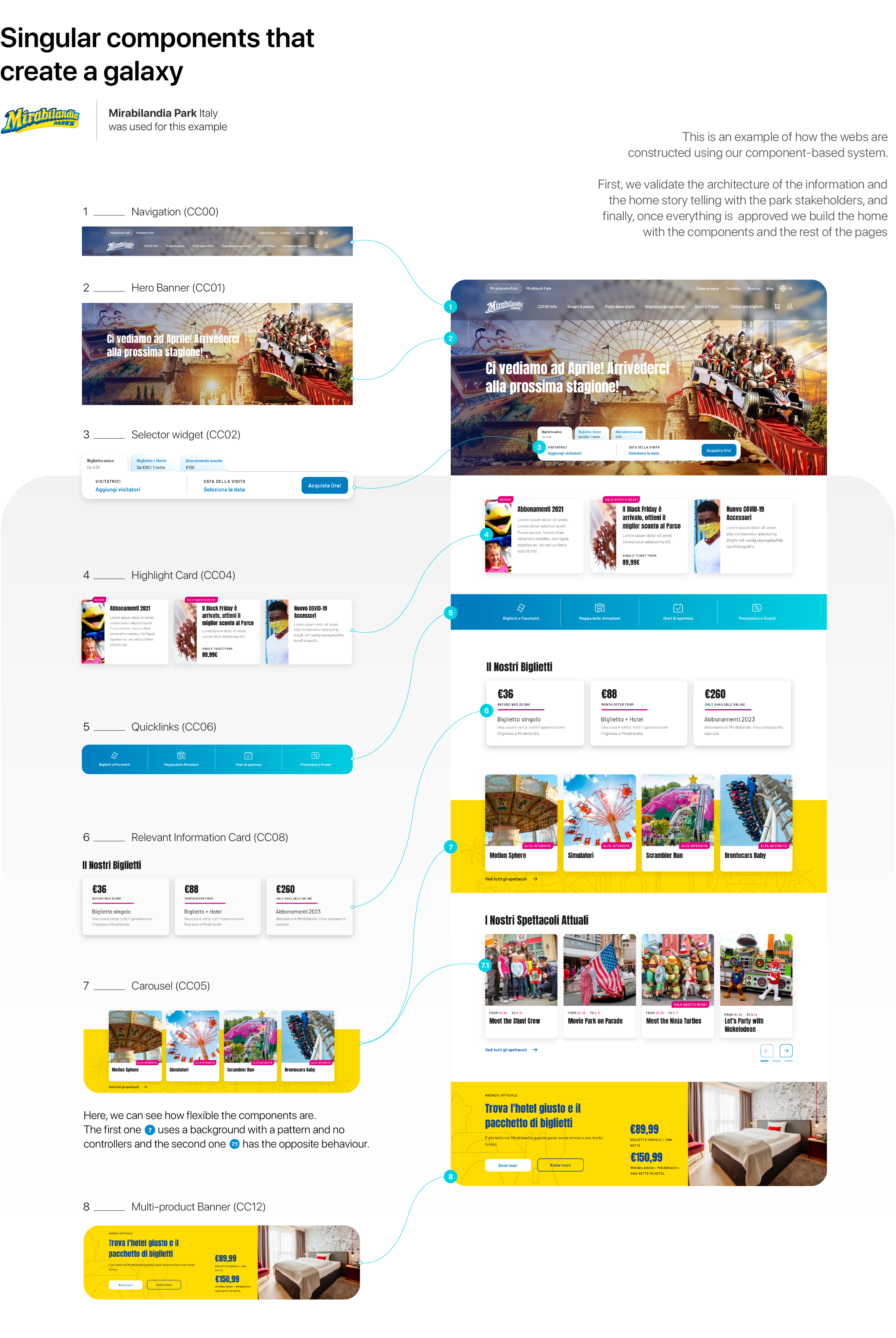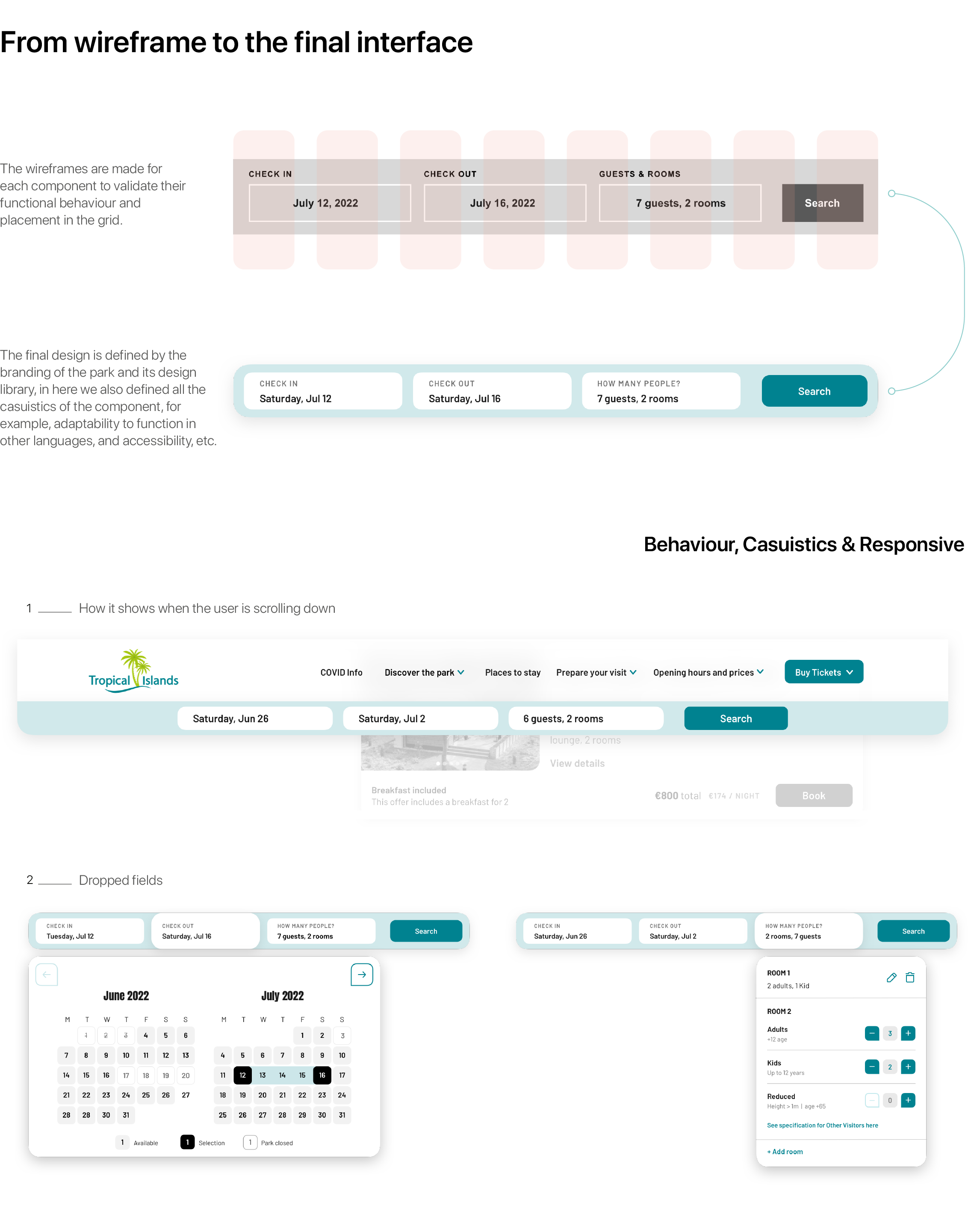01Overview
We had to build the group's global websites with a unique design system, and an upgraded and common technology (funnel and e-commerce) focusing on the enhancement of the user experience and the maximisation of the online sales.
- +80 websites 💻
- 2 experiences (mobile & desktop/tablet adapted) 📲
- +11 languages 💬
- +15 countries 🌎
- 5 currencies 💶
To achieve this project, +220 dedicated multidisciplinary FTEs are being orchestrated with the client and two service providers (Analytics, Search Strategy, UX/UI, Web Development, and Content). This case study will be focused only on the UX/UI part.
The role I played in this project was UI & UX Consultant. We were a team of 6 -incredible- product specialists (Elena Benito, Olmo Romero, Almudena Trujillano, Antonio Jimeno, Pablo de Juan and Bianca Brachetti). The tools used for this project were Sketch, Figma, Trello, InVision, Abstract, Jira and Excel.

02Project Goals
- 1 unique Design System covering local gaps and different types of parks (theme, aquatics, zoos & resorts)
- Harmonise technology (common CMS, e-commerce tool, backend & analytics)
- Simpler technical maintenance and daily management
- Strengthen digital team and capacities, working in an agile way
- Increase not paid traffic (~8-15%) and conversion rate (~20%)
- EBITDA impact: from €15M in 21 months (assuming a normal year) to + €12M in 24 months
03Understanding the problem
At this point, knowing the project goals, it was time to identify the main problems in their current websites. Listed below are some of the main issues 🚩 we saw in the Legacy webs:
- Not user friendly
- Small text, CTAs that weren’t clear and confusing navigation
- The menu header wasn't clear
- Not accessible
- Bad responsive experience
- Too many (confusing) steps during the ticket purchase process causing users leakage in the most important steps
04Research & Insights
After identifying the general bugs and defining our goals for the project, we proceed to divide the parks into waves, each wave had a specific thematic and reason to be:
- 🌊🎢 Wave 1 _____ European Themed Parks
- 🌊🎡 Wave 2 ____ American & Australian Themed Parks
- 🌊🐼 Wave 3 ____ ZOOs & Aquariums
- 🌊🏨 Wave 4 ____ Resort Parks
- 🌊💧 Wave 5 ____ Aquatic Parks
Hence, we proceed to interview a responsible for each park, so we could gather the maximum information about their current pain points with their webs and payment funnels, and also, to understand the cultural differences and needs of each park to take them into account while designing the new platform. Furthermore, using these insights we crafted 10 personas, to capture the pain points and frustrations of our target users.

05Defining the components
Thanks to the research we conducted previously, we came up with a component-like type of solution for this project. Meaning that all parks will have a unique design system where they can customize the colours, fonts, and currency.
First, we defined them to a functional level, validating their functionalities with the key stakeholders, making sure they will be fully responsive, accessible, and coherent throughout the whole web.

06Low-fidelity to final concepts
With these, we ran five concept tests and then settled on a user flow that we would use to begin creating Lo-fi prototypes of the components. The key part of this process was determining exactly which questions we needed to validate with the stakeholders and what problems we were solving for the user, and in what order.
Below we can appreciate a very, very… very simplified example of this process.

07Design System Foundations & UI Refinement
We faced 3 main challenges while designing the design system, those were:
- Neutral Interface that could be accessible to all parks
- Customisable interface where branding should be shown on the interface
- Skeuomorphism vs. Flat design, going from more to less.
Every design system is supported on top of some main basics that will help to build the rest of the components and give unity and consistency to all the elements
📐 Grid: To give a basis for where the website will be built. We established a 12-column grid for desktop and a 4-column for mobile.
🔤 Typography: Two were proposed by the team (Anton & Barlow), but parks were treated particularly in case they needed another font.
🎨 Colours: Defined according to each park’s branding system
🎢 Iconography and patterns: Unique and simple style for all parks to enhance the communication and help the brand to be more powerful.

08Some of the final interfaces
\

09The results 🎉 🎉 🎉
Galaxy Project has beaten its objectives in 2021 and is expected to even improve them in the following years. The main success KPIs are:
- Organic (not paid) traffic: +1,6M additional organic sessions (+14%)
- Conversion rate: +0.5 p.p. conversion rate (+23%)
- Visitors: +0.5M additional visitors (+34%)
- Revenues: +20.5M € additional revenues (+33%)
- EBITDA: +10.2M € impact on EBITDA (+33%)
10My learnings
🔮 This project has helped broaden my system-level product thinking. I was also able to foster strong collaboration by working with other teams tackling similar challenges.
🖇 It also taught me how to better mix the Business, Coding, and Design worlds together.
💫 And on a more personal level, I learned how to get a more balanced personal-work life.